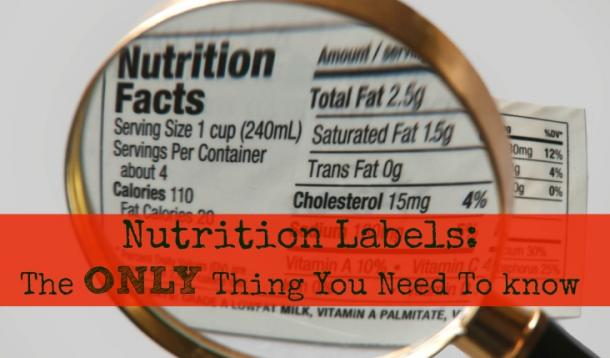
If it were a perfect world, we would all eat fresh whole foods that do not come in a box or bag. We would enjoy seasonal and fresh vegetables and fruits, fresh fish, and local ingredients from the farmers market year round. But, unfortunately, we don't have access to a wide range of local fresh foods year round in most parts of Canada and life gets busy, so whipping up meals from scratch three times a day just isn't possible. For most of us, anyway.
Although I try to be the best "Fooditarian" that I can by buying fresh whole foods most of the time, I inevitably find myself wandering down the grocery aisles in search of the odd packaged food. What I'm looking for, though, is packaged food that is made from real food. Things like stone ground whole wheat flour, canned tuna, salsa, hummus, breakfast oats, milk, and yogurt are some of the packaged foods that I buy on a regular basis. In years past, I've wasted time going through nutrition labels, counting calories, fat grams, and comparing packages for fibre and sodium levels. Although this practice can be helpful for those who have Diabetes and count carbohydrate grams, or when choosing between two products, sometimes it's usually a complete waste of time.
Nutrition labels have become insanely complicated and confusing. I often see health conscious consumers carefully studying the nutrition label, debating whether to buy a product based solely on the amount of calories or grams of carbohydrate in a serving (and the serving, by the way, is determined by the food company, not a health professional), and find myself tempted to say, "You're wasting your time—that won't tell you anything of value." And don't even get me started on the health claims that are plastered all over most packaged food-like items. Claims on a box of breakfast cereal saying, "Cholesterol-free," as if there was cholesterol there in the first place (and as if dietary cholesterol has any sort of measurable impact on our health), or on a container of yogurt saying "fat-free" and "sugar-free," where the product is simply not yogurt at all anymore, are there to mislead consumers and increase sales. That is all.
Claims, such as "all natural," "made with no artificial colours or flavours," or even a stamp of approval by the heart and stroke foundation, can lead consumers to think that a product is a health food when often it's not. There's a reason why companies have these labels on the front of their products. Research consistently shows that consumers will pay more for a product that has a special health benefit—good for them, not so good for us. Unfortunately, our nutrition labels in Canada are slightly outdated too . . . ok, a lot outdated. The percentage daily values that you see next to the gram amounts on a food label are actually based on archaic science dating back to the 1980s!
When it comes down to it, figuring out whether a packaged food item is healthy or not is much simpler than you may think. The one and only thing that you need to look at is the ingredients list. This will tell you everything that you need to know.
Real food is made from real ingredients. If a product contains ingredients that you can't pronounce, don't recognize, or sound more like a chemical, red flags should be raised. Weird ingredients, such as BHT (Butylated Hydroxytoluene), aspartame, sodium nitrate, hydrogenated palm kernel oil, or tartrazine are examples of artificial sweeteners, preservatives, food colourings or trans fats that are added to your food to enhance the appearance, extend the shelf-life, or change the texture or taste of a product. Products that contain an endless list of synthetic ingredients to help preserve and extend the shelf life of a product will likely do more harm than good, so it's best to put them back on the shelf and move on. The best packaged foods, in my opinion, are some form of food that you could easily prepare yourself at home if you had the time and resources. Things like hummus, salsa, trailmix, muesli, sprouted whole grain bread, unsweetened apple sauce, or frozen fruits and vegetables are common items that you'll find in my grocery cart.
When you look at the ingredients list, know that they are listed in order from most to least—in other words, if "wheat flour" (white flour) is listed first, your whole grain bread is not "whole grain" at all. And if "sugar" is listed as the first ingredient, the product is made up of mostly sugar, regardless of the ingredients that follow. Keep in mind that there are various caloric sweeteners (forms of sugar) that manufacturers use. Because "high fructose corn syrup" has developed such a bad rap (because it's terrible for us), manufacturers have strategically replaced it with "glucose" or "fructose," or a seemingly healthier form of sugar, such as sugarcane juice, honey, raw sugar, turbino sugar, or agave syrup. Unfortunately, the body recognizes any type of "sugar" the same way, meaning that it is all metabolized similarly, affects blood sugar similarly, and contains similar amounts of calories per gram. If there are several forms of sugar listed in the ingredients list (especially near the top), the food item at hand should be considered an occasional treat rather than any sort of health food.
Instead of wasting your time counting calories and comparing health claims, flip your packages and boxes over and read the ingredients list. This list is a wealth of information, telling you everything you need to know about your food product.
Want to learn more about choosing healthy foods for your family? Read about how to be a smarter grocery shopper and about which foods you should be buying organic.
I post daily healthy eating tips and resources over on my facebook page, so feel free to check that out too!